The bass is the foundation of the entire mix. Without a solid low end, the song has no “umphf.”
If you learn to compress your bass properly, you’re one step closer to a radio-ready mix.
By the end of this article, you’ll know the simple technique that the pros use to create solid (yet natural) sounding basslines.
I’m guessing you’re here because you want to make your mixes sound professional. We put together a brief training that covers a totally new approach to music production. Until now, everyone has been teaching production totally backward. Just click below to watch.Get industry-quality every time (steal this framework)
But if you just want to learn about bass compression specifically, keep reading.
The Bass Compression Trick for a Tight, Solid Low End
ARVE error: src mismatch
provider: youtube
url: https://www.youtube.com/watch?v=xFNMd1J8Bwc&t=0s&index=1&list=PLEEVAiK8zmk9muxr8Z72R6lHf22183PrS
src: https://www.youtube-nocookie.com/embed/xFNMd1J8Bwc?list=PLEEVAiK8zmk9muxr8Z72R6lHf22183PrS
src gen: https://www.youtube-nocookie.com/embed/xFNMd1J8Bwc
Why Do Basses Need So Much Compression Anyway?
Let me tell you a story.
When I was 12, my parents gave me a book called How to Start a Band.

After reading it cover-to-cover, I was perplexed. It said a band could have any instrument the members wanted… but it HAD to have a bass.
I couldn’t wrap my head around that. I couldn’t hear the bass anyway! Why would it matter so much?
A dozen or so years later, I understand completely.
Because without a solid low end, the song has no energy.

You have to create a firm foundation in your mix in order to produce the kind of energy and excitement you want. In modern music, this is nearly impossible without compression.
Without a compressor, each bass note fades out quickly, causing a loss of bottom end and fullness in between each note.
But with the right amount of compression, that fullness is always there.
Plus, it makes volume balancing ten times easier, because each bass note is around the same volume.
There is an exception, however. Lighter genres don’t need an especially thick and exciting low end sound. They’re shooting for something a little more natural.

If you’re mixing jazz, folk, or classical music, using bass compression may not be for you. But for everyone else, it’s time to learn how to compress your bass.
How To Compress a Bass (like a beginner)
Before you can become the master, you must first become the student…
Philosophical musings aside, you’ve gotta learn this method before you can learn how to compress like the pros.
To start off, set your ratio between 3:1 – 4:1.
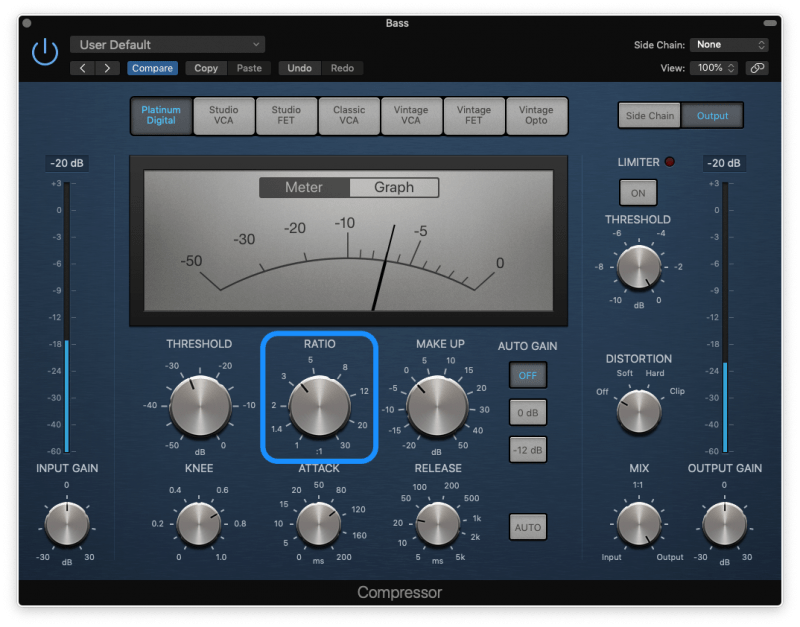
Then, set your attack very slow (100ms) and your release very fast (25ms).
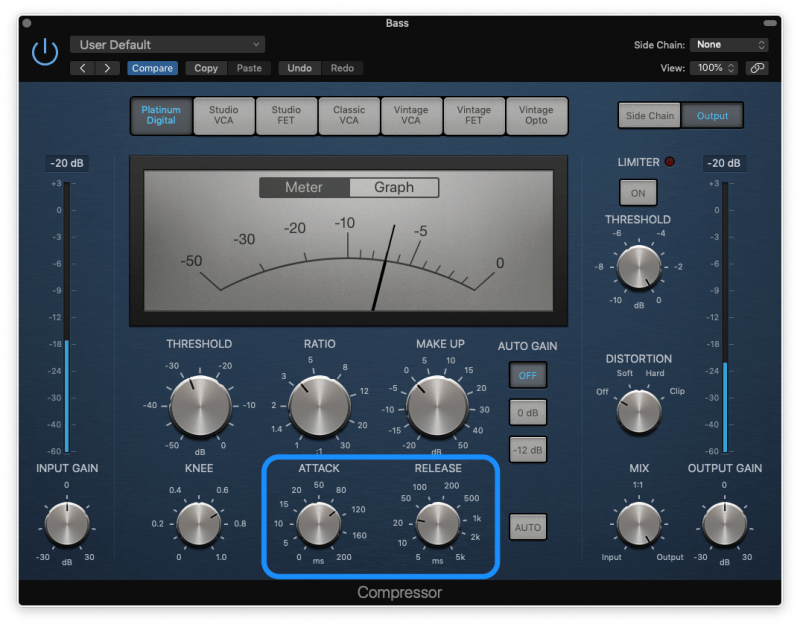
Finally, decrease the threshold until you are getting 5-10dB’s of compression.
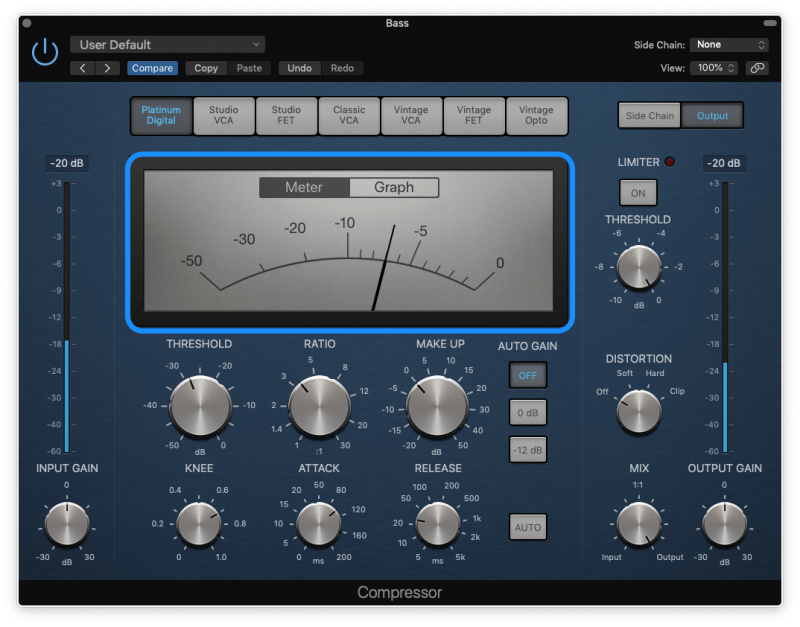
Now that we’ve got our basic settings down, let’s tweak.
First, slowly decrease the attack time until the bass starts to sound dull and less aggressive. That means you’re cutting off the transient of the note.
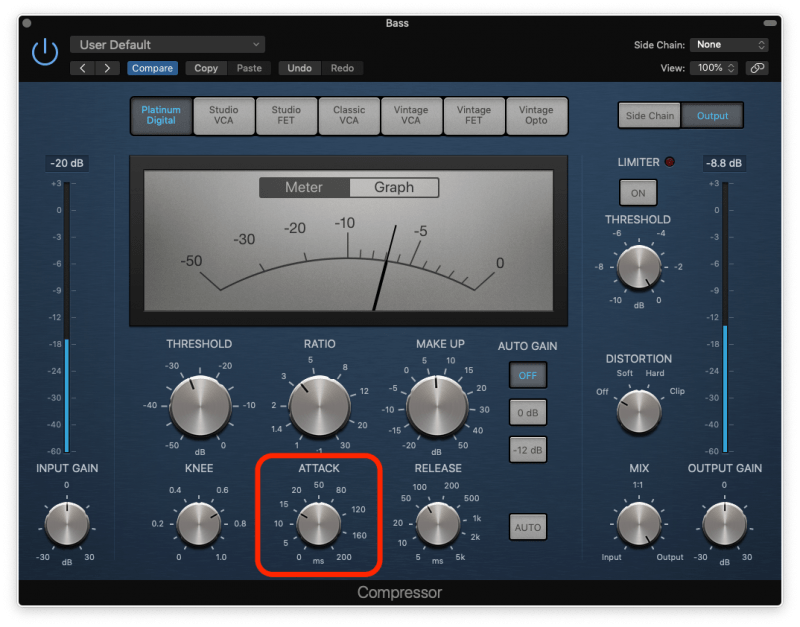
Back off a few milliseconds, and you should be good. You want to get your attack as close as you can to the transient without cutting it off.
Next, slowly increase the release time until the bass starts to “breathe” in time with the song. Functionally, that means that the gain reduction meter has time to return to zero right before the next note starts.

This is likely going to be somewhere between 50-150ms.
If the bass playing is very fast, don’t feel like you have to get the meter to return to zero before EVERY note. One or two times per bar will suffice.
More than anything, remember – use your ears! Don’t rely on the meter. It’s only there as a good frame of reference.
As one of my mentors always taught me… if it sounds good, it sounds good.
Finally, increase the makeup gain until the volume sounds about the same to your ears as it did before.
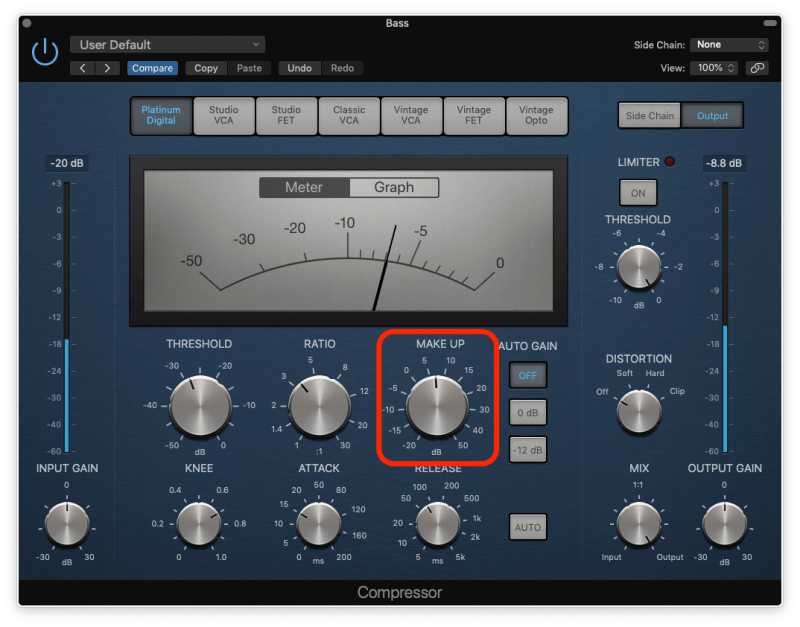
If you find your mix now has too much low end, rather than reaching for an EQ, try doing a little volume balancing. Now that your bass has been heavily compressed, you will likely need to turn the volume up or down a little to get it to fit back into the mix.
Here’s a handy chart that goes over all of the important stuff above. I recommend saving it to your desktop, that way you can easily reference it while you’re mixing.
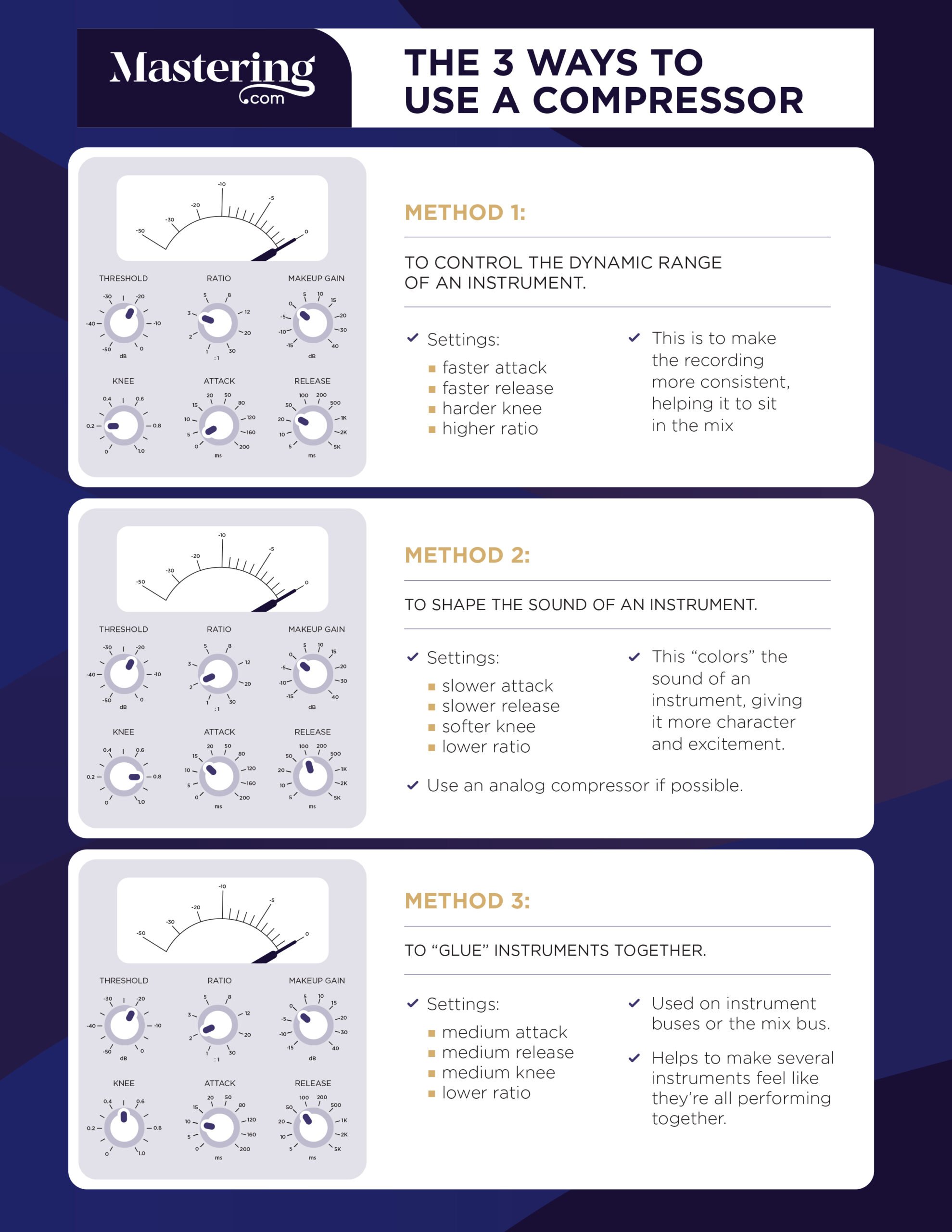
Now that you know the basics… here’s why this method is problematic.
You need a lot of compression to get a solid low end. But 5-10dB’s of compression on a single compressor can wreck your bass tone.
It can leave your bass sounding more consistent, but also unnatural, overly-processed. It hardly leads to the most “musical” result.
That’s why I recommend using the secret technique of the pros: Serial Compression.
How To Compress a Bass (like a PRO)
If you’re looking for a ton of gain reduction but a natural sound, serial compression is your solution.
It sounds more complicated than it is. Serial compression is just using multiple compressors with low gain reduction on the same instrument. Oftentimes, the settings aren’t even different – the compressor plugin is literally duplicated to the space beneath it!
I do this on every single bass I mix. It really is that powerful of a technique.
Serial compression makes the bass sound more natural because rather than slamming a single compressor with 5-10dB’s of gain reduction, you’re doing an average 2-4dB’s of gain reduction over multiple compressors. Because you aren’t slamming a single compressor, the tone sounds less “squashed.”
For this technique, I follow the steps I laid out above. Once I’ve got my compression settings the way I like, I increase the threshold so that the gain reduction decreases to 2-4dB’s.
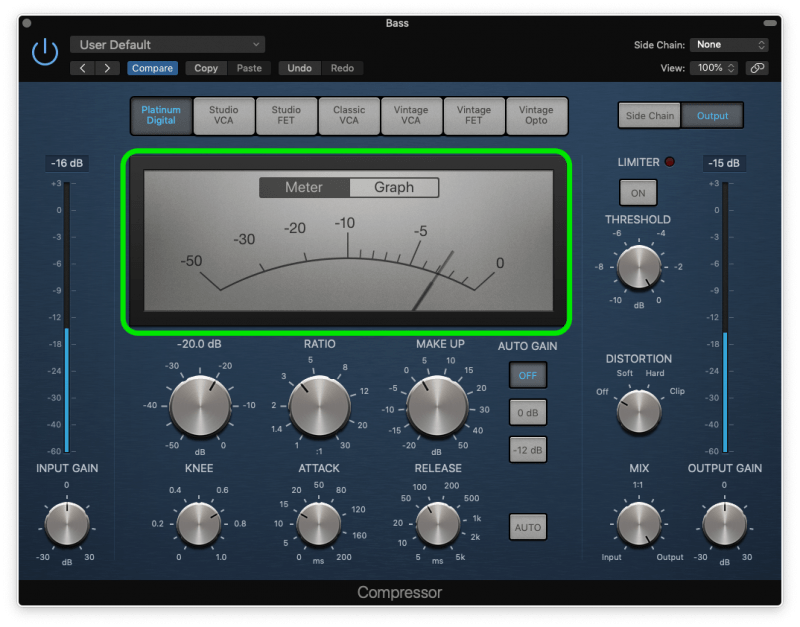
Then I duplicate that compressor plugin to the slot beneath it
It’s as simple as that.
Make sure to tweak the settings of your second compressor. You want the gain reduction to be around the same for each plugin. You’ll also want to adjust the makeup gain so that the bass is the same volume as before.
Want to know the best part of this technique?
You can use it on any instrument you want.
That’s right. You can use serial compression on any instrument you still want sounding natural after a lot of compression.
I use this technique on drums, vocals, and background vocals all the time. Sometimes I’ll even use them on guitars if they’re supposed to sound less aggressive.
Conclusion: Bass Compression
And that’s it! It’s as simple as…
- Set the compression the way you like it
- Duplicate your compressor once or twice
- Tweak the settings so you’re getting only 2-4dB’s of gain reduction each
If you want to dig deeper into music production and learn what it actually takes to make mixes that sound pro… And you’re an intermediate or advanced producer… Be sure to check out the free masterclass: Enjoy!Next Steps










